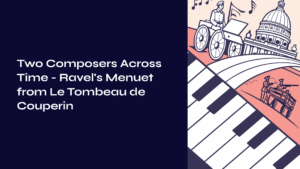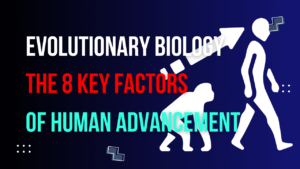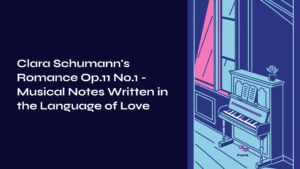Table of Contents
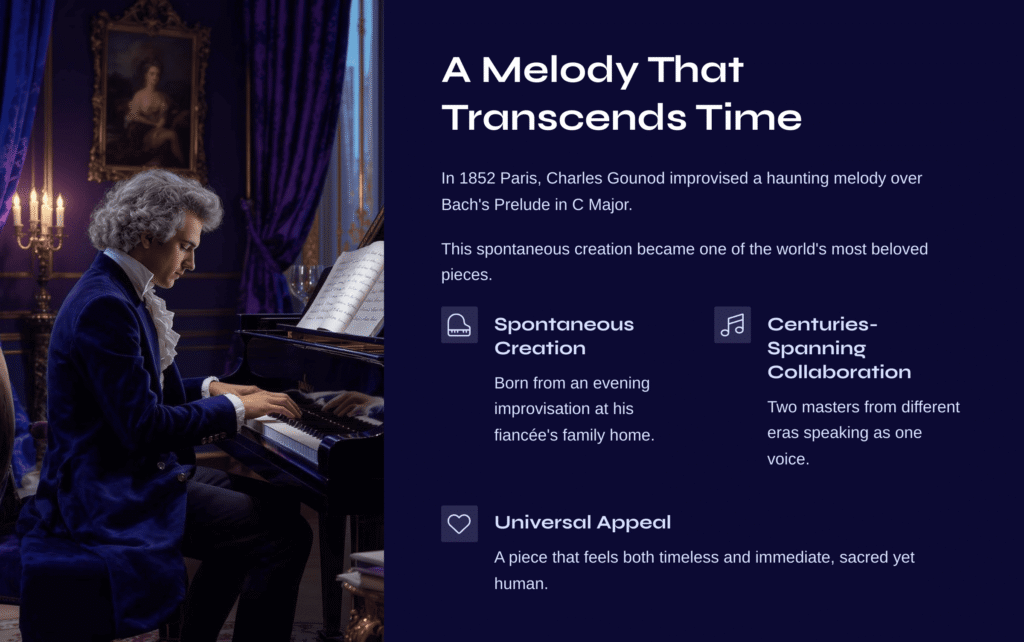
A Melody That Transcends Time
There’s something truly magical about discovering how a simple evening improvisation can become one of the world’s most beloved pieces of music. Picture this: it’s 1852 in Paris, and a young French composer sits at the piano in his fiancée’s family home. As his fingers dance over the keys, playing Bach’s serene Prelude in C Major, a haunting melody begins to emerge above those familiar arpeggiated chords. What Charles Gounod created that evening would eventually become the Ave Maria we know and love today – a perfect marriage between Johann Sebastian Bach’s Baroque foundation and Romantic-era expression.
This isn’t just any musical collaboration; it’s a conversation across centuries, where two masters of different eras found a way to speak as one voice. The result is a piece that feels both timeless and immediate, sacred yet universally human.
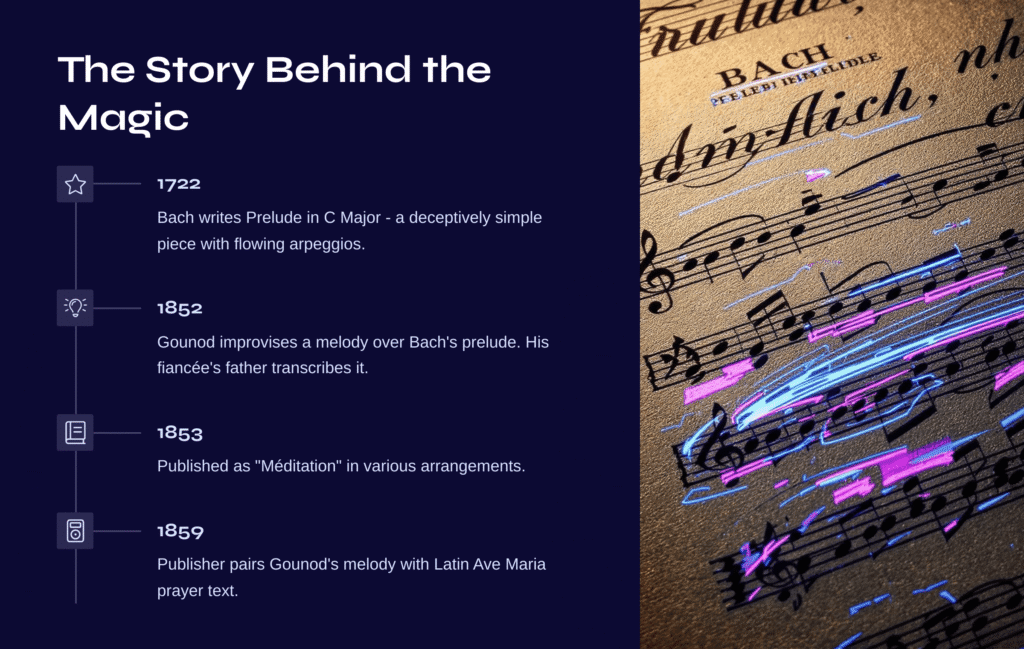
The Story Behind the Magic
Bach’s Musical Canvas
Let’s start with the foundation – Bach’s Prelude in C Major from The Well-Tempered Clavier, written in 1722. At first glance, this piece might seem deceptively simple. It’s just flowing sixteenth notes, broken chords that seem to cascade like gentle water. But beneath that simplicity lies Bach’s genius: a perfectly structured harmonic journey that moves through related keys before returning home to C major.
What makes this prelude so special is what it doesn’t have – a prominent melody. Instead, Bach created an open harmonic landscape, like a beautiful garden waiting for the right flower to bloom within it. The arpeggiated texture creates a meditative, almost hypnotic quality that would prove irresistible to future composers.
Gounod’s Moment of Inspiration
Fast forward to that fateful evening in 1852. Charles Gounod, already establishing himself as a promising composer, was deeply familiar with Bach’s works thanks to his time in Leipzig and his friendship with Fanny Mendelssohn Hensel. As he played Bach’s prelude, something magical happened – a melody began to sing above those familiar harmonies.
His fiancée’s father, Pierre-Joseph-Guillaume Zimmermann, was a respected pianist and professor at the Paris Conservatoire. Recognizing the beauty of what he was hearing, he quickly transcribed Gounod’s improvisation. What started as a spontaneous musical moment was originally titled “Méditation” and published in 1853 in various arrangements.
The piece’s journey to becoming the Ave Maria we know today took another twist in 1859 when publisher Jacques-Léopold Heugel paired Gounod’s melody with the Latin Ave Maria prayer text. This sacred pairing transformed a beautiful instrumental piece into something that could speak directly to the human soul through both music and word.
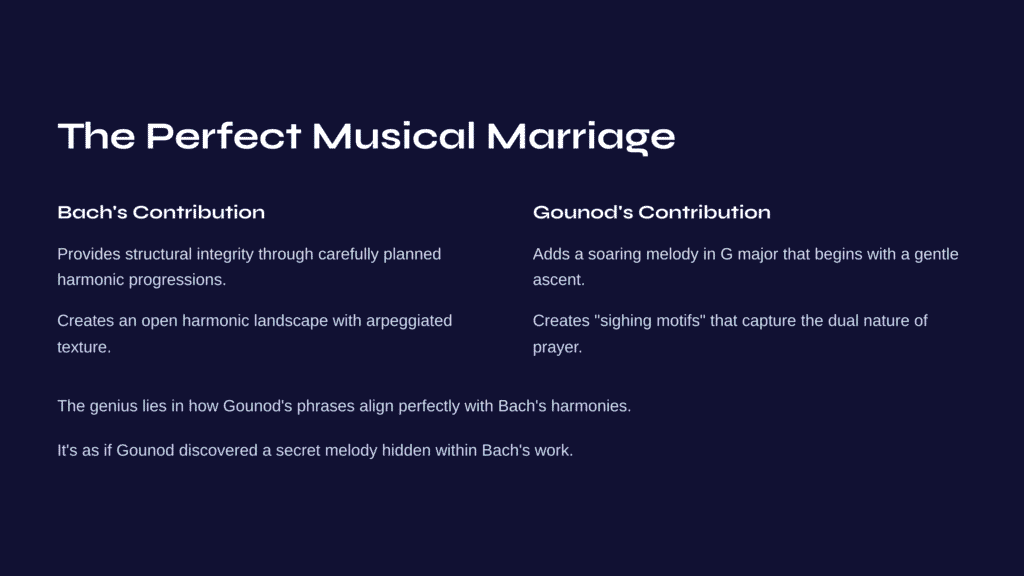
The Perfect Musical Marriage
How Bach and Gounod Complement Each Other
What makes this collaboration so remarkable is how perfectly the two composers’ styles blend. Bach’s prelude provides structural integrity – those carefully planned harmonic progressions give the piece its backbone. Meanwhile, Gounod’s melody, written in G major (a fifth above Bach’s C major), soars above with Romantic expressiveness.
The opening of Gounod’s melody is particularly brilliant. It begins with a gentle ascent (G-A-B-C), like a prayer lifting toward heaven, before gracefully descending in what musicians call a “sighing motif.” This interplay between rising and falling perfectly captures the dual nature of the Ave Maria text – both praising the divine and expressing human humility.
The genius lies in how Gounod’s four-bar phrases align perfectly with Bach’s harmonic rhythm. Despite being written 130 years after Bach’s prelude, the melody feels like it was always meant to be there. It’s as if Gounod discovered a secret melody that Bach had hidden within his harmonies, waiting for someone to find it.
Technical Brilliance Made Accessible
While music theorists can spend hours analyzing the sophisticated voice-leading and harmonic progressions, what strikes most listeners is the piece’s immediate emotional impact. The way Gounod’s melody flows over Bach’s foundation creates moments of tension and release that feel as natural as breathing.
One interesting historical note: some 19th-century editions included an extra measure (known as the “Schwencke measure”) that was supposedly added to “correct” what someone thought was an irregular harmony in Bach’s original. Modern scholarship has confirmed that Bach’s original progression was perfect as written, but Gounod’s melody adapts beautifully to either version – testament to its flexibility and musical intelligence.
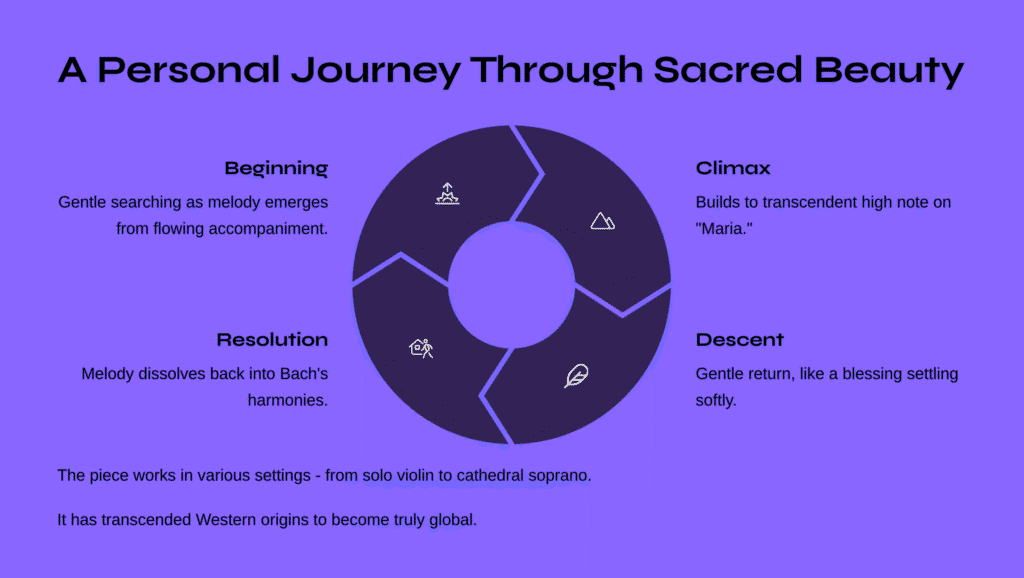
A Personal Journey Through Sacred Beauty
The Emotional Landscape
Listening to the Bach-Gounod Ave Maria is like taking an emotional journey. The piece begins with that sense of gentle searching as Gounod’s melody emerges from Bach’s flowing accompaniment. There’s something almost conversational about it – as if we’re overhearing an intimate prayer.
The middle section builds with subtle intensity, and when the melody reaches its climactic high note on “Maria,” there’s a moment of transcendence that seems to lift us beyond the everyday world. Then comes the gentle descent, like a blessing settling softly around us. The final moments, where Gounod’s melody dissolves back into Bach’s harmonies, feel like returning home after a spiritual journey.
What’s remarkable is how this piece works equally well in various settings. Whether performed by a solo violinist in an intimate recital, a soprano in a cathedral, or even adapted for modern instruments, the essential emotional core remains unchanged. Artists from Jascha Heifetz to Andrea Bocelli, from Yo-Yo Ma to contemporary artists, have all found something personal to express within this timeless framework.
Universal Appeal Across Cultures
The piece has transcended its Western classical origins to become truly global. You’ll hear it at weddings in Seoul, funerals in São Paulo, and quinceañeras in Los Angeles. Each culture seems to find something of their own spiritual tradition reflected in this music, even when the Latin text might be unfamiliar.
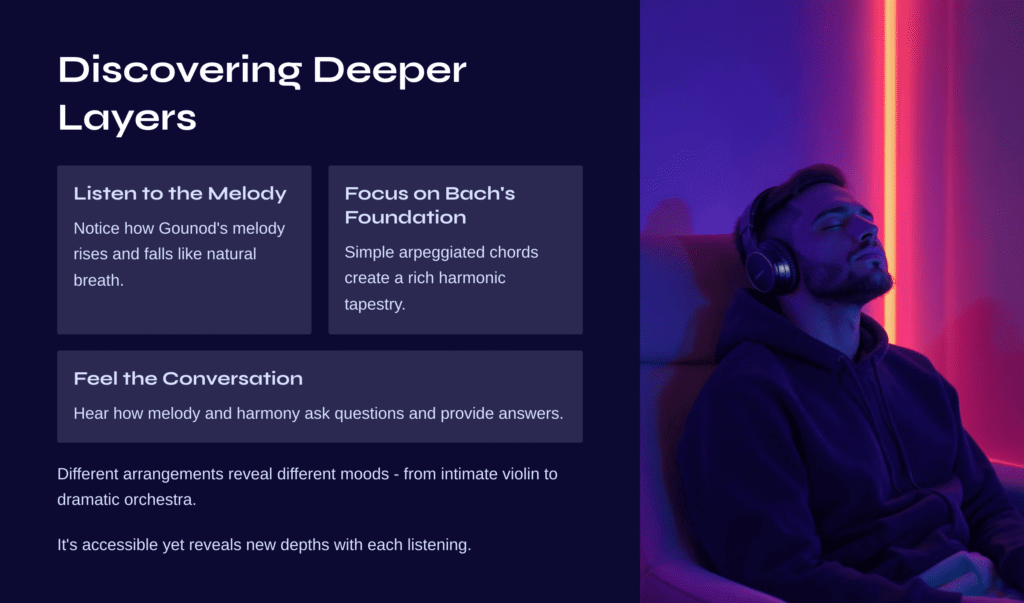
Discovering Deeper Layers
What to Listen For
When you listen to the Ave Maria, try focusing on different elements during repeated hearings. First, just let yourself be carried along by Gounod’s beautiful melody – notice how it rises and falls like natural speech or breath. Then, on another listening, pay attention to Bach’s accompaniment. Those seemingly simple arpeggiated chords are actually creating a rich harmonic tapestry that supports and enhances every note of the melody.
Listen for the moments where the melody and harmony seem to ask musical questions and provide answers. Notice how certain chord changes can make your heart skip a beat or bring a sense of peaceful resolution. If you’re listening to a vocal version, pay attention to how the Latin text’s rhythm naturally fits with the musical phrases.
Different Arrangements, Different Moods
The beauty of this piece is how it transforms in different arrangements. A solo violin version emphasizes the melody’s singing quality and allows for expressive rubato. An orchestral arrangement can add layers of color and drama. A piano solo version brings out the intimate, meditative quality that connects us back to that original evening improvisation.
For those new to classical music, this piece serves as a perfect gateway. It’s immediately accessible yet reveals new depths with each listening. It demonstrates how music can be both intellectually sophisticated and emotionally direct.
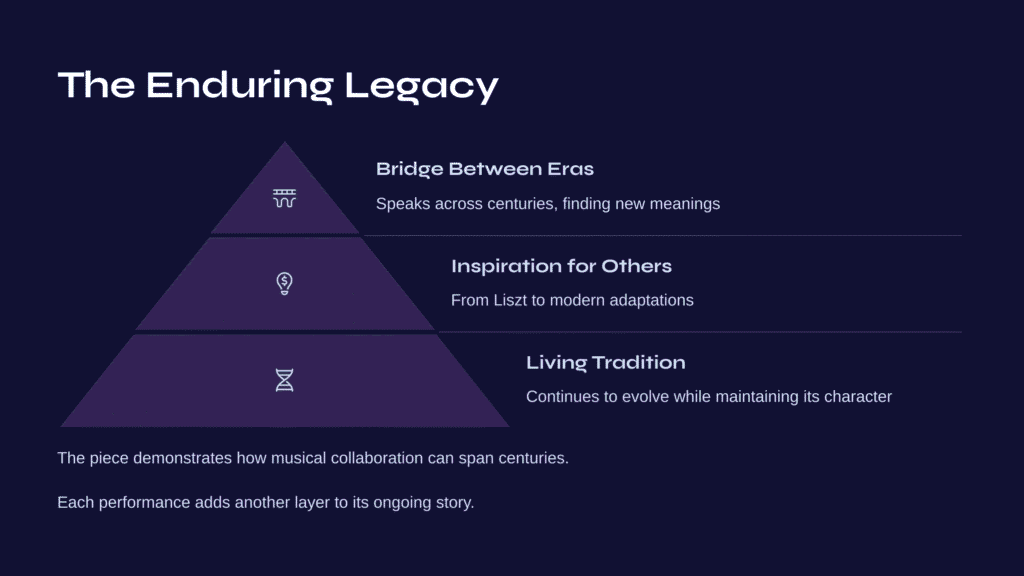
The Enduring Legacy
A Bridge Between Eras
What the Bach-Gounod Ave Maria teaches us about music is profound. It shows us that great art isn’t confined to its own time period – it can speak across centuries, finding new voices and new meanings. Bach’s mathematical precision and spiritual depth found a perfect partner in Gounod’s Romantic expressiveness and melodic gift.
This collaboration has inspired countless other composers and arrangers. From Franz Liszt’s piano transcriptions to modern pop adaptations, the piece continues to evolve while maintaining its essential character. It’s been featured in films, used in meditation practices, and remains a staple of both sacred and secular musical life.
A Living Tradition
Perhaps most importantly, this Ave Maria reminds us that music is a living, breathing art form. What began as an evening’s improvisation became a published meditation, then transformed into a sacred song, and continues to find new expressions today. Each performance, each new arrangement, each listening experience adds another layer to its ongoing story.
The piece also serves as a beautiful example of how musical collaboration doesn’t always require the collaborators to be in the same room – or even the same century. Sometimes the most profound artistic partnerships happen when one artist discovers the perfect complement to another’s work, creating something neither could have achieved alone.
Whether you encounter this piece in a grand cathedral or through earbuds on a quiet evening, whether you’re hearing it for the first time or the hundredth, the Bach-Gounod Ave Maria continues to offer its gentle invitation to pause, listen, and be moved by the simple miracle of two melodies becoming one.
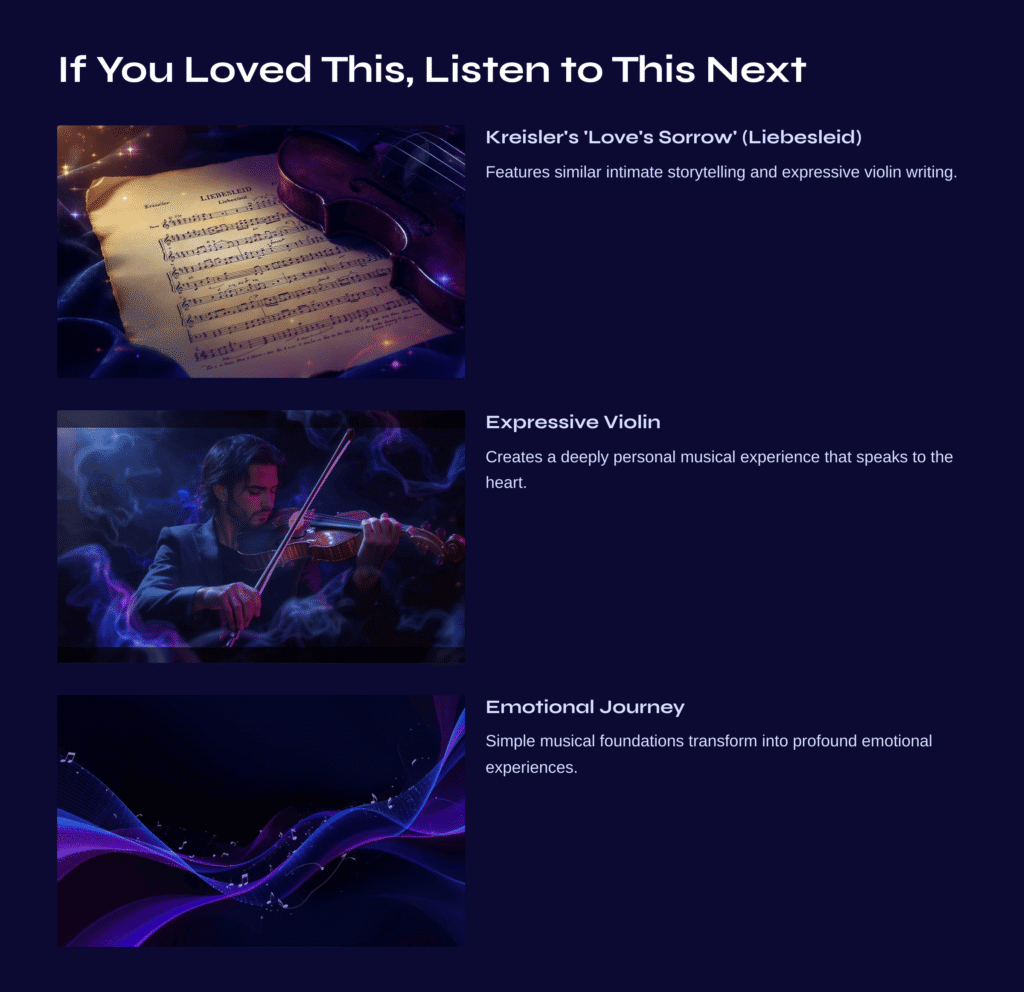
If You Loved This, Listen to This Next
If you were captivated by the sublime collaboration between Bach and Gounod’s Ave Maria and its perfect marriage of Baroque structure with Romantic expression, you might find yourself equally enchanted by Whispers of the Violin: Kreisler’s ‘Love’s Sorrow’ Liebesleid – where similar intimate storytelling and expressive violin writing create a deeply personal musical experience that speaks directly to the heart. Both works reveal how masterful composers can transform simple musical foundations into profound emotional journeys that transcend their historical periods and continue to move listeners across generations.

